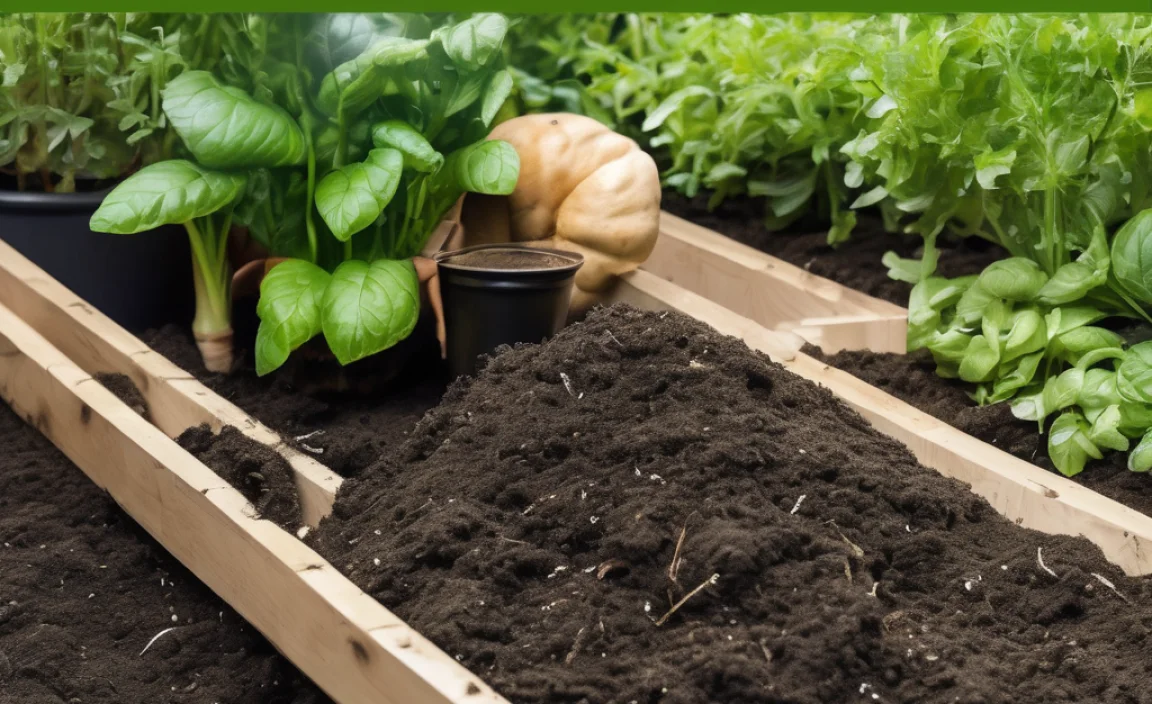Seeing tiny flies buzzing around your in-vessel composter can be a bit of a surprise, and honestly, a little off-putting. You’re trying to do something great for the planet and your garden, and suddenly it feels like you’ve got a bug problem. Don’t worry, it’s a common hitch that happens to many home composters, especially when using enclosed systems. The good news is, it’s usually not a big deal and totally fixable. We’ll walk through exactly why it happens and give you some simple, effective ways to manage these little visitors.
Understanding In-Vessel Composting Flies: What’s Bugging You?
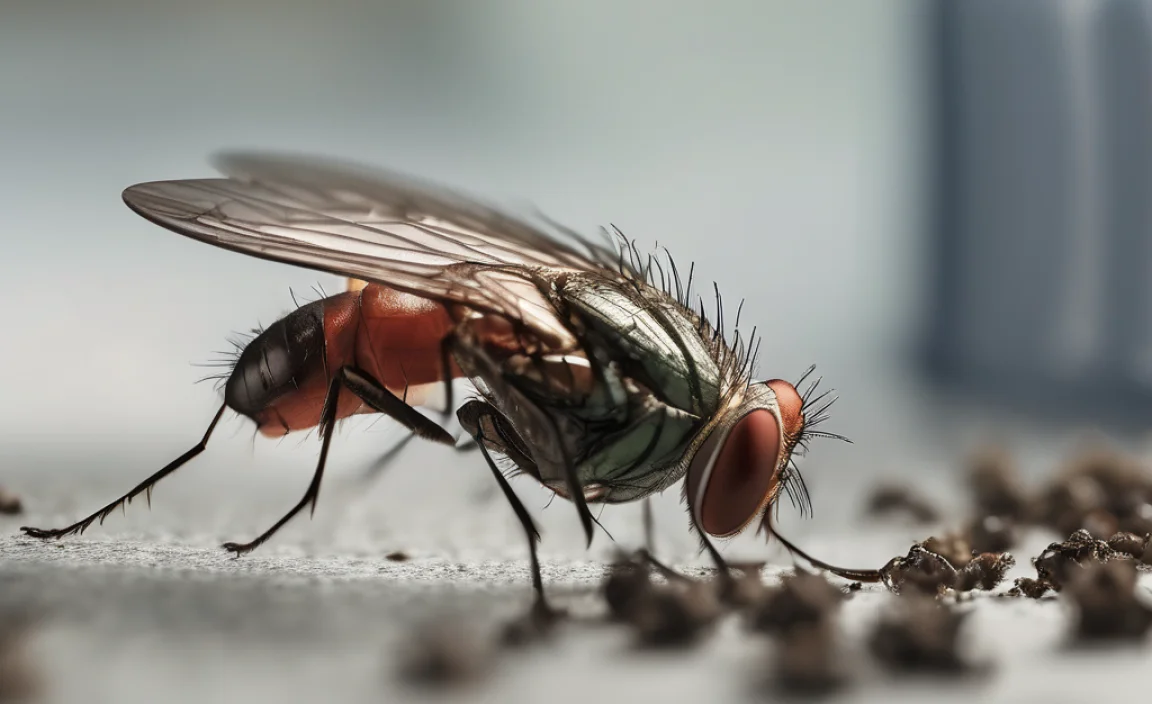
So, these little flies often show up in our compost bins. Why? Mostly, they’re attracted to the moist, nutrient-rich environment that’s developing inside your composter. They’re not usually a sign of something going wrong with the composting process itself, but more a signal that something about the conditions is acting like a flashing neon sign for certain types of insects. Let’s break down the usual suspects and what draws them in.
The Usual Suspects: Fungus Gnats and Fruit Flies
When you see small flies, they are most likely one of two types:
- Fungus Gnats: These are tiny, dark flies that love damp, organic matter. They are commonly found in moist soil and compost. Their larvae feed on fungi and organic material, which thrive in compost.
- Fruit Flies: These are smaller, often tan or reddish-brown flies. They are attracted to fermenting sugars and food scraps. While they can also be attracted to compost, they are more typically associated with kitchens and ripening fruit.
The good news is, neither of these are typically harmful to humans or your composting process. They just look a bit messy and can be a nuisance. Their presence often points to subtle imbalances in your compost bin’s environment.
What Attracts Them?
Several factors can make your in-vessel composter an attractive place for these flies:
- Excess Moisture: Compost that is too wet creates an ideal breeding ground.
- Uncovered Food Scraps: Exposed kitchen scraps, especially fruits and vegetables, are a direct invitation.
- Improper Carbon-to-Nitrogen Ratio: Too much “green” (nitrogen-rich) material and not enough “brown” (carbon-rich) material can lead to a boggy, smelly mess that attracts bugs.
- Poor Aeration: Compost needs air circulation. Stagnant air encourages mold and bacteria that flies love.
- New Additions: Sometimes, even just adding fresh kitchen scraps can stir things up and bring out the flies looking for an easy meal.
Don’t get discouraged! Identifying the cause is the first step to fixing it. Let’s look at how we can be proactive and reactive to keep these little fliers under control.
Proactive Prevention: Keeping Flies Out in the First Place
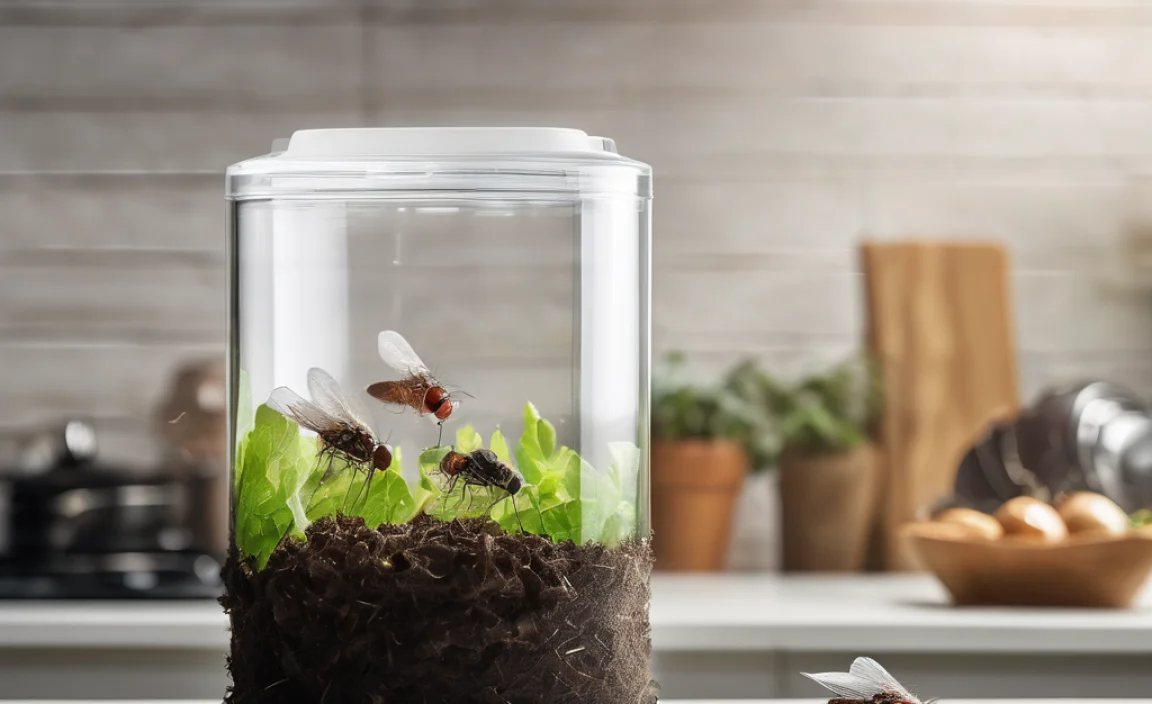
The best defense is a good offense! By setting up your in-vessel composter with the right conditions from the start, you make it a much less appealing place for flies to set up shop.
1. Master the Mix: Balancing Greens and Browns
The “greens” (like food scraps, grass clippings) and “browns” (like dried leaves, shredded paper, cardboard) are the building blocks of compost. Getting the balance right is key. A good rule of thumb is to aim for roughly two to three parts browns for every one part greens by volume.
This balance helps in a few ways:
- Moisture Control: Browns absorb excess moisture, preventing sogginess.
- Aeration: Browns create air pockets, allowing your compost to breathe.
- Nutrient Control: It prevents the compost from becoming too nitrogen-rich, which can get smelly and attract pests.
You want your compost to be damp like a wrung-out sponge, not soaking wet.
2. Bury Your Greens
When adding fresh kitchen scraps, especially fruity or vegetable matter, always bury them deep within the compost pile. Use a trowel or a stick to create a small pocket in the existing compost, drop in your scraps, and then cover them completely with more compost. This action hides the food source that attracts flies and helps it start breaking down faster.
3. Keep it Covered (Properly)
In-vessel composters are designed to be enclosed, which is great for containing heat and moisture. However, ensure the lid seals properly. If your lid has ventilation holes, make sure they aren’t too large and don’t provide easy entry for adult flies. Some composters come with mesh screens; check that these are intact.
4. Aerate Regularly
Flies love stagnant, moist environments. Regular turning or aerating your compost pile introduces oxygen, which speeds up decomposition and discourages anaerobic conditions that attract pests. Most in-vessel composters have a mechanism for turning or aeration. Aim to do this at least once a week, or whenever you add significant amounts of new material.
Even a simple poke with a garden fork or a compost aerator tool can make a big difference if your composter doesn’t have a built-in turning mechanism.
5. Manage Moisture Levels
Feeling or looking at your compost is the best way to gauge moisture. If it’s too wet, add more brown materials like shredded cardboard, dry leaves, or sawdust. If it seems too dry, you can add a little water, but do so sparingly and mix it in well. The goal is consistency—like a damp sponge.
A simple moisture test: Grab a handful of compost. If water drips out when you squeeze it, it’s too wet. If it crumbles apart easily, it’s likely too dry. If it holds its shape but doesn’t drip, it’s just right.
For more on the science of composting, check out the EPA’s composting resources. They offer great foundational knowledge.
Reactive Solutions: Dealing with an Existing Fly Problem
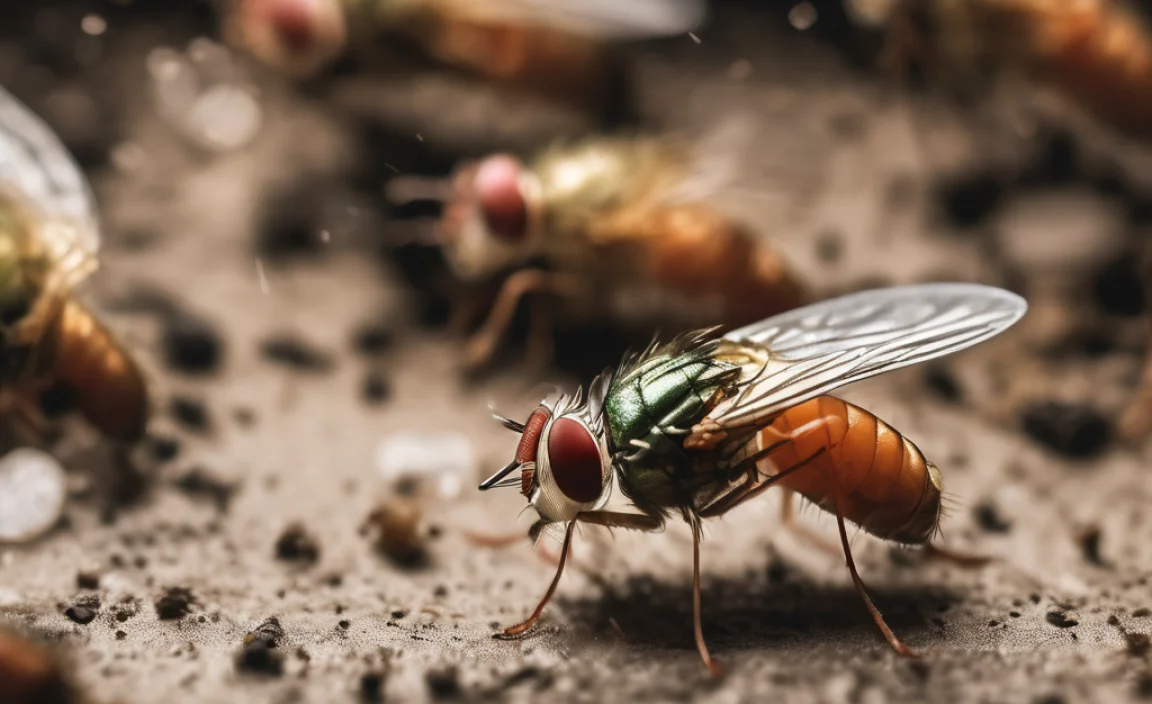
Even with the best prevention, sometimes flies decide to visit. Don’t fret! Here are some tried-and-true methods to get rid of an established problem.
1. The “Bury and Cover” Deep Dive
This is your first line of defense when you spot flies. As mentioned in prevention, immediately select the areas with the most obvious food scraps and bury them deep. Then, add a generous layer of brown materials (shredded newspaper, cardboard, dry leaves) on top of everything. This acts as a barrier and odor masker.
2. Introduce More Browns
An influx of flies often means the compost might be too wet or has too much nitrogen. Adding a good amount of carbon-rich “browns” will help absorb excess moisture and balance the nitrogen. Think of it as giving your compost a dry, absorbent blanket.
3. Improve Aeration (Aggressively)
If flies are present, it’s a sign the compost might be stagnant. Turn your compost bin more frequently for a week or two. This might mean several times a week. If your composter has a crank or turning mechanism, use it vigorously. If not, use a sturdy garden fork to break up any matted areas and mix things thoroughly.
4. The “Sacrificial Layer” Tip
Sometimes, flies are really honing in on specific, recently added food scraps. You can try creating a “sacrificial layer” on top. This means adding a thick layer of thoroughly composted material, or even a thin layer of garden soil, on top of your existing compost. This can act as a physical barrier for flies and discourage them from accessing fresh food. It also helps the new materials break down faster underneath.
5. Fly Traps (DIY and Store-Bought)
While the goal is to fix the cause, traps can help reduce the adult population quickly.
- DIY Apple Cider Vinegar Trap: Fill a small bowl or jar with apple cider vinegar. Add a drop of dish soap. The vinegar attracts the flies, and the soap breaks the surface tension, causing them to drown. You can cover the top with plastic wrap and poke small holes, or just leave it open if you’ve got a contained area for the trap.
- Commercial Fly Traps: You can buy sticky traps or specialized fly traps designed for compost bins.
Place these traps near, but not necessarily inside, the main composting mass. They work best when the cause (excess moisture, exposed food) is also being addressed.
6. Consider a “Hot” Compost Finish
If your compost has been diligently managed, a period of “hot” composting can kill fly eggs and larvae. This involves ensuring the compost pile is moist enough, has a good mix of greens and browns, and is aerated well. A hot pile (reaching temperatures of 130-160°F or 55-70°C) is a hostile environment for most pests. You might need to reach out to a local gardening expert or university extension office for advice on achieving specific temperatures if you’re aiming for this. The Purdue Extension has excellent guides on various gardening and composting topics that can help.
Troubleshooting Common Fly Scenarios
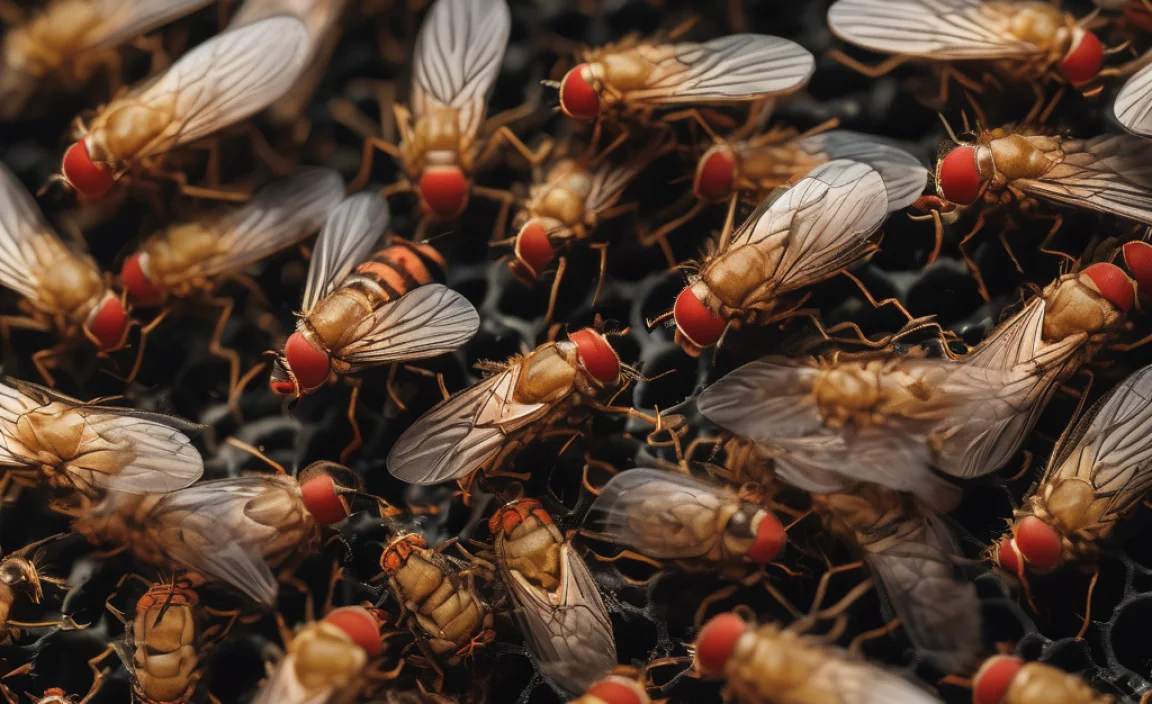
Let’s imagine some common fly situations and how to tackle them, just like figuring out if your faucet is dripping or your light switch is faulty.
Scenario 1: Tiny white larvae on top of food scraps
What it means: You’ve got fungus gnat or fruit fly larvae. They are present because there’s food and moisture for them.
Your move:
- Immediately bury those food scraps deep into the compost.
- Cover the entire surface of the compost with a thick layer of brown materials (shredded paper, dry leaves, sawdust).
- Turn the compost bin thoroughly to mix everything and introduce air.
- Consider setting out a fly trap near the bin to catch adults before they lay more eggs.
Scenario 2: Persistent small flies, even after burying scraps
What it means: The overall conditions might still be too wet, or there’s not enough aeration. The flies are finding ways to access what they need, or they were there before you added new material.
Your move:
- Add a significant amount of dry brown material to the entire compost mass to absorb excess moisture.
- Turn the compost bin at least every couple of days for a week. Focus on breaking up any clumps.
- Check the lid seal and ventilation holes. Ensure they aren’t allowing easy entry.
Scenario 3: Flies emerge only right after adding kitchen scraps
What it means: This is normal to some extent. The fresh scraps are a beacon. The key is to stop them from staying and breeding.
Your move:
- Always bury your scraps deeply.
- Immediately top with a layer of browns directly over the buried scraps.
- Give the bin a quick turn or stir if possible.
Here’s a quick table to help visualize common compost issues and their fly-related symptoms:
| Compost Condition | Potential Fly Issue | Solution Focus |
|---|---|---|
| Too Wet | Attracts fungus gnats and fruit flies | Add Browns, Improve Aeration |
| Not Enough Browns | Can become smelly, attract more flies | Balance Greens and Browns |
| Exposed Food Scraps | Direct attractant for flies | Bury Scraps, Cover with Browns |
| Poor Aeration | Stagnant, moist environment | Turn Regularly, Add Browns for Structure |
| Excess Greens (Nitrogen) | Can become slimy and attract pests | Add Browns, Balance Ratio |
Dealing with compost issues is a lot like troubleshooting any home system – pay attention to the signs it’s giving you, and use the right tools and techniques to address them.
Maintaining a Fly-Free Composter: Long-Term Habits
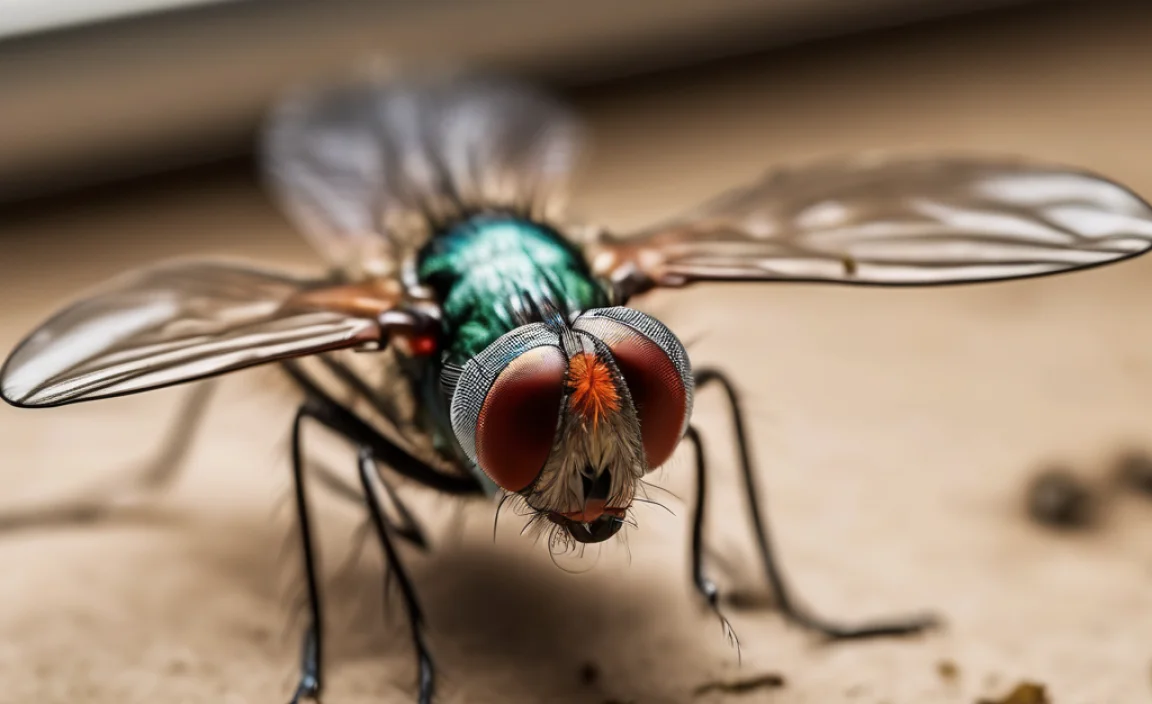
Once you’ve gotten your fly situation under control, you’ll want to keep it that way. It’s all about establishing good composting habits. Think of it like regularly cleaning your gutters or checking your smoke detectors – simple tasks that prevent bigger problems.
Regular “Good Housekeeping”
- Consistent Addition of Browns: Make it a habit to always have a stash of dry brown materials (like shredded newspaper, cardboard scraps, or dry leaves) near your composter. Every time you add kitchen scraps, immediately add a layer of browns, even if you’re just topping up.
- Regular Turning: Schedule a day each week to turn your compost. Even if you don’t see flies, this habit ensures good aeration and heats up the pile, which discourages pests.
- Monitor Moisture: Make it a quick check whenever you add material or turn the pile. Is it too wet? Too dry? Adjust as needed by adding more browns or a bit of water.
- Cleanliness Around the Bin: While not directly inside, keeping the area around your composter clean can prevent other insects from being attracted to any spilled food particles.
What to Avoid
- Adding Too Much of One Thing: Avoid dumping large amounts of wet food scraps without balancing them with browns.
- Ignoring Smells: A strong, unpleasant odor is often a sign of a problem, usually too much nitrogen or moisture, which can attract flies. Address it promptly.
- Meat, Dairy, and Oily Foods: While some advanced composters can handle these, for beginners, it’s best to avoid them as they are highly attractive to pests and can cause odor issues.
- Diseased Plants: While they might seem like greens, diseased plants can harbor pathogens that you don’t want spreading in your garden via compost.
When to Consider a Full Bin Overhaul
If your composter has become overwhelmingly smelly, soggy, and full of flies, and the above methods aren’t making a dent, it might be time for a fresh start. This involves:
- Emptying the entire bin.
- Discarding any particularly problematic, slimy material.
- Mixing the remaining material with a large quantity of fresh brown materials.
- Re-establishing the bin by layering (greens, browns, starter, water).
This is a more drastic step, but sometimes necessary to reset the conditions and get back on track.
FAQ: Your In-Vessel Composting Fly Questions Answered
Here are some common questions beginners have about flies in their composters, answered in a straightforward way.
Q1: Are the flies in my compost bin dangerous?
A: Generally, no. The most common flies found in compost bins, like fungus gnats and fruit flies, are not harmful to humans or pets. They are more of a nuisance and a sign that conditions might be a bit too moist or nitrogen-rich.
Q2: How can I stop flies from getting into my new compost bin?
A: The best way is prevention! Always bury fresh food scraps deep within the compost, cover them with brown materials (like shredded paper or dry leaves), and ensure your bin’s lid is sealed well. Regular turning to maintain good aeration also helps.
Q3: My compost is too wet and flies are everywhere. What should I do?
A: This is a common issue. Add a good amount of dry “brown” materials—shredded cardboard, dry leaves, sawdust—to absorb the excess moisture. Then, turn your compost thoroughly to incorporate the browns and improve air circulation. You might need to do this a few times over a week.
Q4: Can I just ignore the flies? Will they go away on their own?
A: While they might not cause serious damage, ignoring them means the underlying conditions (likely too wet or unbalanced) are not being fixed. This can lead to poor-quality compost and potentially attract other less desirable visitors. It’s better to address them for healthier compost.
Q5: What are “browns” and “greens” in composting?
A: “Greens” are nitrogen-rich materials like fruit and vegetable scraps, coffee grounds, and fresh grass clippings. “Browns” are carbon-rich materials like dried leaves, shredded newspaper, cardboard, straw, and wood chips. A good mix is typically
.lwrp.link-whisper-related-posts{
margin-top: 40px;
margin-bottom: 30px;
}
.lwrp .lwrp-title{
}.lwrp .lwrp-description{
}
.lwrp .lwrp-list-container{
}
.lwrp .lwrp-list-multi-container{
display: flex;
}
.lwrp .lwrp-list-double{
width: 48%;
}
.lwrp .lwrp-list-triple{
width: 32%;
}
.lwrp .lwrp-list-row-container{
display: flex;
justify-content: space-between;
}
.lwrp .lwrp-list-row-container .lwrp-list-item{
width: calc(25% – 20px);
}
.lwrp .lwrp-list-item:not(.lwrp-no-posts-message-item){
max-width: 150px;
}
.lwrp .lwrp-list-item img{
max-width: 100%;
height: auto;
object-fit: cover;
aspect-ratio: 1 / 1;
}
.lwrp .lwrp-list-item.lwrp-empty-list-item{
background: initial !important;
}
.lwrp .lwrp-list-item .lwrp-list-link .lwrp-list-link-title-text,
.lwrp .lwrp-list-item .lwrp-list-no-posts-message{
}@media screen and (max-width: 480px) {
.lwrp.link-whisper-related-posts{
}
.lwrp .lwrp-title{
}.lwrp .lwrp-description{
}
.lwrp .lwrp-list-multi-container{
flex-direction: column;
}
.lwrp .lwrp-list-multi-container ul.lwrp-list{
margin-top: 0px;
margin-bottom: 0px;
padding-top: 0px;
padding-bottom: 0px;
}
.lwrp .lwrp-list-double,
.lwrp .lwrp-list-triple{
width: 100%;
}
.lwrp .lwrp-list-row-container{
justify-content: initial;
flex-direction: column;
}
.lwrp .lwrp-list-row-container .lwrp-list-item{
width: 100%;
}
.lwrp .lwrp-list-item:not(.lwrp-no-posts-message-item){
max-width: initial;
}
.lwrp .lwrp-list-item .lwrp-list-link .lwrp-list-link-title-text,
.lwrp .lwrp-list-item .lwrp-list-no-posts-message{
};
}

I am passionate about home engineering. I specialize in designing, installing, and maintaining heating, ventilation, and air conditioning systems. My goal is to help people stay comfortable in their homes all year long.


